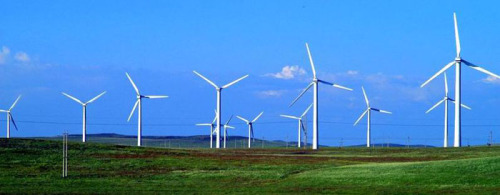 According to data from the National Energy Administration, in 2012, the average number of hours spent on wind power equipment was 1,890 hours, a decrease of 30 hours from 2011. The number of hours of wind power utilization in individual provinces (regions) has dropped to around 1,400 hours, wasting clean energy and investment, and exacerbating environmental conflicts.
According to data from the National Energy Administration, in 2012, the average number of hours spent on wind power equipment was 1,890 hours, a decrease of 30 hours from 2011. The number of hours of wind power utilization in individual provinces (regions) has dropped to around 1,400 hours, wasting clean energy and investment, and exacerbating environmental conflicts. The National Energy Administration issued the “Notice on Accomplishing Wind Power Integration and Abatement of Related Work in 2013†​​recently. It pointed out that with the rapid growth of wind power installed capacity in China, the curtailment of wind curtailment in some regions in 2012 is serious, and the nation’s wind power is about 200. Billion kWh.
“The problem of wind curtailment and power curtailment has led to a decline in the economic efficiency of wind farm operation. In 2012, the direct economic loss caused by wind power curtailment and wind curtailment was above 10 billion yuan.†said Qin Haiyan, secretary-general of the Wind Energy Professional Committee of the Chinese Renewable Energy Society, if current The coal consumption level of 20 billion kwh is equivalent to the loss of 6.78 million tons of standard coal.
Qin Haiyan said that from a regional point of view, the most severe power curtailment is in the northeastern region, and power curtailment in Heilongjiang, Jilin, Liaoning, and eastern Inner Mongolia has reached nearly 10 billion kWh, accounting for about half of the country's total.
Industry experts pointed out that the elimination of large-scale wind power has always been a global problem, and China's problems in this area have become more prominent. China Wind has concentrated resources and large scale, and it is far away from the load center. The resource market is small and difficult to dissipate on the spot; wind power itself has the characteristics of volatility and intermittency. Wind power grid connection requires the construction of peaking power supply, while China’s wind power is concentrated. The “Three North†(northwest, north, northeast) regions have a single power supply structure and basically have no peak shaving capacity. In addition, the lack of cross-regional transmission capacity is also an important constraint.
The National Energy Administration pointed out in the notice that the large amount of wind curtailment and power restriction exposure is a problem of energy management in China. The notice clearly states that the utilization of wind power is an important basis for the annual arrangement of wind power development scale and project layout. Areas with good wind power operation can speed up construction progress appropriately. In principle, areas with low utilization of wind power should solve the problem of severe wind curtailment in principle. No longer expand the scale of wind power construction.
According to the “Twelfth Five-Year Plan†for wind power development, the total installed capacity of grid-connected power plants will reach 100 million kilowatts by 2015 and the installed capacity will reach 200 million kilowatts by 2020.
As far as the current development situation is concerned, the cumulative installed capacity of wind power and the National Energy Board announced the approved projects. Theoretically speaking, the planning objectives and specific implementation projects have been connected. The key lies in whether the proposed project can be fully implemented and smoothly connected to the grid.
On February 27 this year, the State Grid Corporation of China issued the Opinions on the Implementation of Distributed Power Grid-connected Services, and promised to incorporate distributed power sources, including wind power, into the national grid, and provide preferential grid connection conditions and strengthen supporting facilities. Grid construction, optimizing grid-connected processes, simplifying grid-connected procedures, and improving service efficiency.
This will undoubtedly solve the development bottleneck of wind power grid connection difficulties. However, as an emerging industry, the maturity of the wind power industry and technological progress all require support based on market size. To maintain a certain growth rate and market size, it must be complemented by sound policy support.
Nickel Alloy,Super Alloy,Inconel Alloys
Super Alloys Incoloy Alloys Co., Ltd. , http://www.nsnichrome.com
